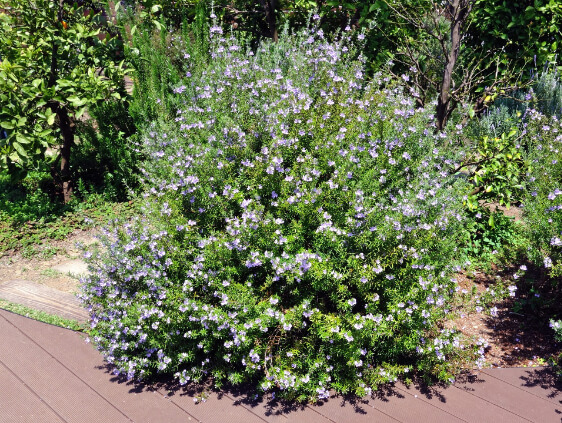A reader asked whether a list existed whereby Australian native plants could be substituted to create a Japanese Garden. To my knowledge such a list doesn’t exist, until now that is.
First, we have to pull apart the Japanese Garden style to understand how the substitution is going to work.
More...
Understanding Japanese Garden Design
Predominantly this form of garden design features the use of rocks and pebbles, water, conifers and evergreens, flowering deciduous trees (cherry, peach, magnolias etc), many flowering shrubs (azaleas, rhododendrons, camellias) and then there’s the quintessential bamboo.
The rocks and pebbles aren’t a problem. It’s easy to locate granite rocks and river stones/pebbles. Even the water (as it is being constantly reused) isn’t too difficult to source.
So how do we choose water-wise Australian natives that will replace these plants and still pull off the effect of a Japanese Garden?
Let’s start with the conifers. Australia has a few conifers of its own and a few plants that easily resemble this group of plants.
Australian Native Conifers (or Conifer-Looking Plants)
- Huon Pine – Lagarostrobos franklinii
- Bunya Bunya – Araucaria bidwillii
- Grey Honey Myrtle – Melaleuca incana
- Acacia ‘Limelight’ – Acacia cognata ‘Limelight’
- Mountain Plum Pine – Podocarpus lawrencei
- Pencil Pine – Athrotaxis cupressoides
That should get you started in that department. The next type of plant you’re looking for is some evergreen shrubs that can be used as hedges or balled specimens. Options in this area are;
Australian Native Shrubs

- Coastal Rosemary – Westringia fruticosa
- Golden Diosma – Coleonema pulchrum ‘Aurea’
- Green Honey Myrtle – Melaleuca diosmifolia
- Gold Dust Wattle – Acacia acinacea
Australian Native Flowering Shrubs
Most flowering shrubs used within a Japanese garden style are tidy and compact specimens. Most Aussie natives on the other hand are quite sprawling and leggy. However, there are newer species coming onto the market all the time that feature more compact growing habits. Try some of these on for size.
- Callistemon ‘Demesne Bronwyn’ could easily rival a camellia – though flowering a few months later than its competitor.
- Grevillea ‘Austraflora Canterbury Gold’
- Hairpin Banksia – Banksia spinulosa
- Silky eremophila – Eremophila
These should get you started but keep your eyes peeled for newer varieties that offer longer flowering periods and a compact shrub habit.
Australian Native Flowering Deciduous Trees
In a typical Japanese garden, there are many trees to choose from that lose their leaves in the cooler months and then look resplendent with their new spring foliage and flowers.
Australia doesn’t have any flowering deciduous natives and only two that will at least shed its leaves each autumn – the deciduous beech Nothofagus gunnii. To my knowledge, I’m not even sure these are available in cultivation but if they were you would be limited to growing them in very cold climates such as Tasmania.
The second is grown at the other extreme, in Northern Australia. The Baobab tree, Adansonia gregorii (or commonly referred to as the “boab” tree) would be a great starter in a Japanese garden. However, neither of these trees flower – not significantly anyway – and wouldn’t be able to replicate the beautiful Magnolia x soulangeana or flowering cherries.

Australian Native Bamboo
To those who know, this is an oxymoron. There are actually no native bamboos that grow in Australia as most either originate from Asia while a few grow natively in parts of Africa.
However, it doesn’t matter as most bamboo plants are very drought-tolerant once established. Give them six months to get their roots in order and they’ll fit right in.
If you need some tips on which species to buy, read up on this post I wrote earlier on how to grow bamboo in your garden. Clumping varieties are your best option but if you have to grow a running type then ensure that you’ve taken precautions to contain it.
Australian Native Creepers/Climbers
While the typical Japanese garden would use Wisteria sinensis to grace arbours and cover walls, the Australian substitute would be Hardenbergia comptoniana. This beautiful pea-shaped flower literally drips off its entwined branches and can easily replicate the stereotypical Japanese vine.
Start Designing a Japanese Garden
It’s not difficult to find indigenous alternatives to use a style in your garden. It certainly takes a little more effort, but most styles can be achieved by researching the core fundamentals and substituting native plants for them.
Published on June 6, 2023 by Gary Clarke
Last Updated on April 3, 2024




